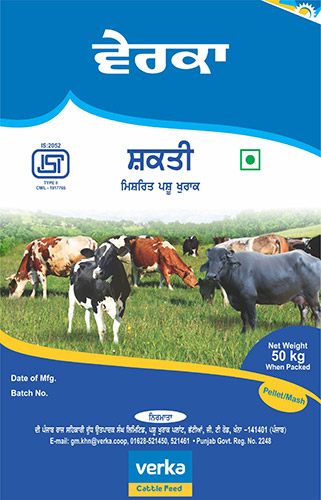 National Dairy Development Board, which is the leading development agency, has proposed a draft of 102 Million tonnes to meet the projected demand of 180 Million tonnes by 2021-22.
National Dairy Development Board, which is the leading development agency, has proposed a draft of 102 Million tonnes to meet the projected demand of 180 Million tonnes by 2021-22.
The National Dairy Plan Will Focus on:
i) Productivity measures to enhance milk production as the average annual increment production will have to increase from 2.5 million tonnes now to 5 Million Tonnes over the next 15 years, and
ii) Strengthening and expanding infrastructure to procure process and market milk through existing and new institutional structure.
iii) The plan proposed to increase the share of organized sectors in milk production to 65% from the current 30% to ensure supply of quality milk to consumers.
iv) Under National Dairy Plan Phase-1 Project, Project Steering committee has approved the following sub-project plans for Milk Union during the year 2013-14 as detailed below:-
1. Ration Balancing Programme Milk Union, Ropar, Jalandhar & Ludhiana
2. Fodder Development Programme Milk Union, Ropar, Ludhiana & Jalandhar.
3. Village based Milk Procurement System Milk Union, Patiala, Faridkot, Ferozepur, Ropar & Ludhiana.
The main focus of NDP, Phase-1 which will continue up till 2017-18 is to enhance productivity of milch animals. During the year 2013-14, approved project cost of above project was Rs. 428.96 lacs with a grant of Rs. 319.38 lacs. Milk Unions had received a grant of Rs. 272.00 lacs for implementation of the above subject project plans during the year 2013-14. During 2015-16, more milk unions were covered under the above programmes.


































 To improve the breeds in the milkshed area, Milkfed is undertaking Artificial Insemination programme covering 4313 societies under AI through Single and Cluster AI centers, (Single AI societies = 277, Cluster centres= 813 covering 4036 societies) with 6.76 lac AI done during the year 2015-16.
To improve the breeds in the milkshed area, Milkfed is undertaking Artificial Insemination programme covering 4313 societies under AI through Single and Cluster AI centers, (Single AI societies = 277, Cluster centres= 813 covering 4036 societies) with 6.76 lac AI done during the year 2015-16.
 As a result of continuous extension of dairying by Milkfed, the farmers are fully convinced about the importance of high yielding forages for increasing milk production at low cost, thereby getting a substantial margin from the trade. Considering the shortage and non availability of fodder seed, Milkfed started its own Fodder Seed Production and Distribution Programme and has established Fodder Seed Processing Plant at Bassi Pathana in district Fatehgarh Sahib. The unit has processing and grading capacity of 15 MTs of seed per day.
As a result of continuous extension of dairying by Milkfed, the farmers are fully convinced about the importance of high yielding forages for increasing milk production at low cost, thereby getting a substantial margin from the trade. Considering the shortage and non availability of fodder seed, Milkfed started its own Fodder Seed Production and Distribution Programme and has established Fodder Seed Processing Plant at Bassi Pathana in district Fatehgarh Sahib. The unit has processing and grading capacity of 15 MTs of seed per day. Under NDP-1, Milkfed at its three Milk Unions Ropar, Jalandhar and Ludhiana at a total cost of Rs. 135.35 lac (100% Grant) is implementing Fodder Development Programme to make available high yielding Fodder Seeds by promoting marketing of truthfully labeled/certified seeds through Cooperative Societies to increase the productivity of Fodder Crops and to promote the conservation of green fodder and crop residues by demonstrating Silage making and use of mowers in the operation area of Union.
Under NDP-1, Milkfed at its three Milk Unions Ropar, Jalandhar and Ludhiana at a total cost of Rs. 135.35 lac (100% Grant) is implementing Fodder Development Programme to make available high yielding Fodder Seeds by promoting marketing of truthfully labeled/certified seeds through Cooperative Societies to increase the productivity of Fodder Crops and to promote the conservation of green fodder and crop residues by demonstrating Silage making and use of mowers in the operation area of Union.
 The programme is aimed at supplementing the income of small farmers and rural landless workers in the state. Under the programme, 600 Integrated Buffalo Development Centers (IBDCs) covering 300 villages would be set in the area of Kandi, Bet, Border and trans-Ghaggar area at a cost of Rs. 60 crore under RKVY over five years. Under this project, 200 IBDCs have already been established and are operated by local educated unemployed youth.
The programme is aimed at supplementing the income of small farmers and rural landless workers in the state. Under the programme, 600 Integrated Buffalo Development Centers (IBDCs) covering 300 villages would be set in the area of Kandi, Bet, Border and trans-Ghaggar area at a cost of Rs. 60 crore under RKVY over five years. Under this project, 200 IBDCs have already been established and are operated by local educated unemployed youth. The method of Insemination is better than the natural service which was more prevalent in the buffaloes.
The method of Insemination is better than the natural service which was more prevalent in the buffaloes.

 Ration balancing is the process to balance the level of various nutrients for an animal, from the available feed resources, to meet its nutrient requirements for maintenance, production and optimal growth.
Ration balancing is the process to balance the level of various nutrients for an animal, from the available feed resources, to meet its nutrient requirements for maintenance, production and optimal growth.